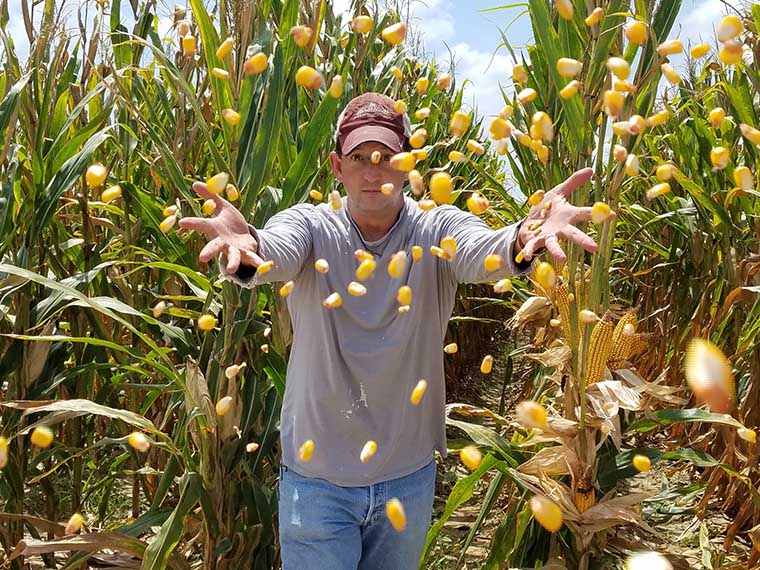The information presented on this page may be dated. It may refer to situations which have changed or people who are no longer affiliated with the university. It is archived as part of Mississippi State University's history.
Mississippi corn had a $343 million value of production in 2015. As corn increases in prevalence as one of the key commodities grown in Mississippi, producers contend with the issues that arise from the state's hot, dry summers.
Researchers in the Mississippi Agricultural and Forestry Experiment Station recently completed a three-year replicated study that focused on hybrids and plant populations in early planted corn. The work was conducted at three sites in Mississippi: Starkville, Brooksville, and Verona. The team assessed environmental limitations, optimal plant populations, and certain hybrid traits. The project was funded by the MAFES Special Research Initiative and the Mississippi Corn Promotion Board. The study incorporated the use of unmanned aerial vehicles and other precision agricultural tools.
Dr. Brien Henry, MAFES scientist and professor in plant and soil sciences in the College of Agriculture and Life Sciences, led the work. Henry said the research indicates that planting corn early at slightly higher populations should be beneficial to Mississippi producers.
"Currently, dryland producers often plant their corn crop mid-April at 25,000 to 30,000 plants per acre," Henry said. "Our research showed favorable yields if we planted in mid-March at a population rate of 30,000 to 35,000 corn plants per acre."
Henry said timing is everything when it comes to corn.
"Not only is there a very specific window when it comes to planting corn, there are also critical periods when the corn tassels and enters the reproductive stage and then again at harvest."
Henry said precision agricultural tools are invaluable throughout the season and that the technology helps researchers determine key information that unlocks answers for producers.
"Precision agricultural tools help us learn what is and isn't working during these critical stages. We use these tools on the planting side to learn about soil profile and prep and during critical stages to monitor things like moisture and temperature," Henry said. "When it comes to harvest, we are researching tools that will help us tease out optimal grain moisture content so producers can harvest and bring their crop to market at just the right time."
As part of the research, the team collected multispectral data from unmanned aerial vehicles, measured chlorophyll with SPAD meters, and leaf area index with Accupar light sensors. The data showed raised beds with sandy and loamy soils prepared in the fall were the most conducive to early planting. Additionally, the researchers found that early planted corn avoided the hottest, driest part of the summer as the crop entered the critical reproductive stage.
"This translates to greater access to water and cooler temperatures, with a diminished likelihood of pests and pathogens getting in the way of growth," Henry said.
On the harvest side, Henry hopes a new project involving precision ag will help producers better identify optimal harvest timing.
"Producers have to wait for corn to dry down and reach a certain moisture level. Grain quality issues arise if the moisture level isn't just right," Henry said. "We collected a year of data via UAV flyovers to assess the greenness of the plant in order to determine optimal moisture content. We are processing the data now to see what answers we can find."
Henry and his team work with a suite of MSU experts in precision agriculture. They partner with the Geosystems Research Institute when using unmanned aerial vehicles. On the harvest project, Henry enlisted the expertise of Dr. Jason Ward, formerly with the Department of Agricultural and Biological Engineering.
In an upcoming project, his team is working with Dr. Amelia Fox, a visiting scholar working on the MSU Precision Agriculture Initiative in the College of Agriculture and Life Sciences. Fox is a geospatial mapping expert who is building GIS maps based on data Henry's team collected. The project evaluates how starter fertilizer, foliar-applied zinc, and growth hormones might aid in corn plant development in various hybrids across different planting dates.
"Ultimately, we are trying to use our resources the best way possible," Henry said. "I think the precision agricultural tools and expertise at MSU help us as agronomic researchers find the best strategies to help answer questions that will hopefully increase producer profit and production efficiencies while reducing cost and risk."

